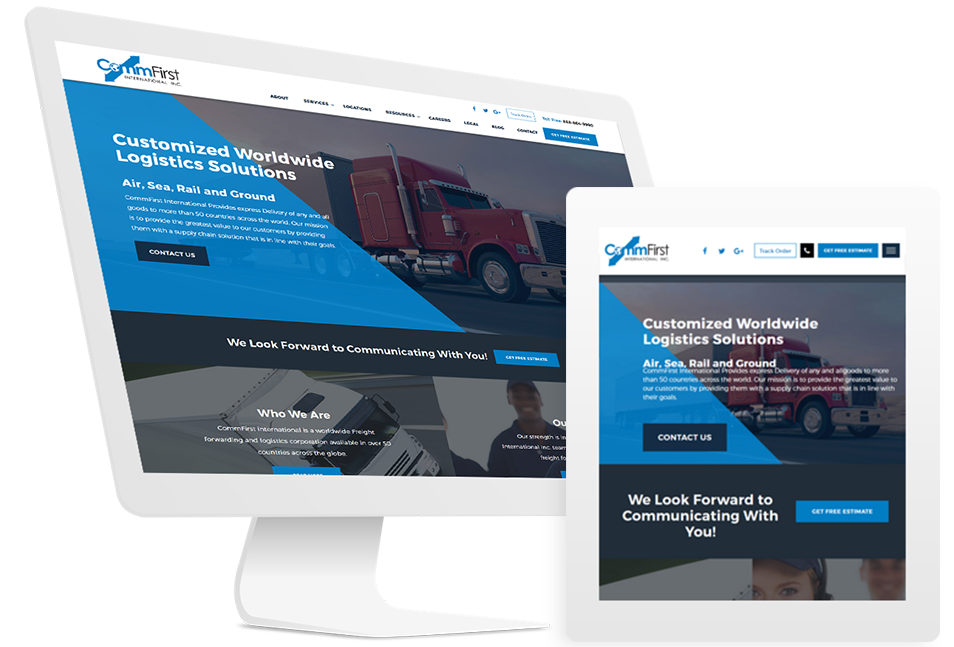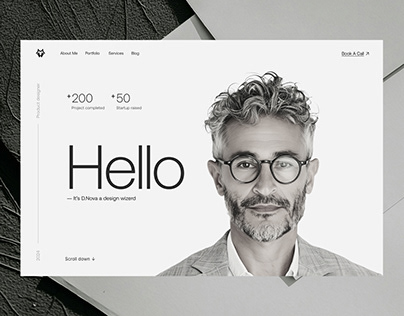Modern Website Design Services to Enhance Your Business
Top Tips for Creating an Impactful Web Site Layout That Transforms
To accomplish this, one have to take into consideration a range of factors, consisting of recognizing the target audience, prioritizing user experience, and maximizing for mobile systems. The tactical usage of compelling call-to-actions and a well-defined aesthetic pecking order plays a crucial duty in assisting individuals via their trip.

Understand Your Target Market
Recognizing your target market is fundamental to effective website layout, as it prepares for developing an appealing user experience. Recognizing who your customers are, including their demographics, preferences, and behaviors, makes it possible for designers to customize the site's web content, design, and functionality to satisfy specific demands.
Performing comprehensive marketing research is important in this process. Surveys, meetings, and analytics can offer beneficial understandings into individual assumptions and pain factors. By assembling this data, developers can develop individual identities that stand for various sectors of the target market, ensuring that style choices are notified and relevant.
Additionally, recognizing the target market assists in choosing appropriate layout elements such as color design, typography, and imagery that resonate with customers. A site that talks directly to its target market promotes a sense of link and depend on, encouraging longer visits and greater conversion prices.
Ultimately, a user-centered strategy to website style not just boosts customer complete satisfaction however additionally supports business goals by driving interaction and commitment. By prioritizing the needs and preferences of the target audience, a website can efficiently serve its function and accomplish preferred results.
Prioritize Individual Experience
To improve the general efficiency of an internet site, focusing on customer experience (UX) is essential (Website Design). A well-designed UX guarantees that visitors can navigate the website easily, locate details promptly, and involve with material meaningfully. This brings about raised customer complete satisfaction and greater conversion prices
Begin by implementing user-friendly navigation. Menus needs to be practically structured, enabling users to find vital locations of the site with minimal initiative. Uniformity in layout elements, such as color design and typefaces, cultivates familiarity, which is essential for keeping user involvement.
Furthermore, take into consideration the loading speed of your site. A delay of just a few seconds can lead to substantial drop-offs, as customers are much less most likely to wait on a slow-loading web page. Streamlining images and optimizing code can boost performance and keep site visitors.
Additionally, quality in content presentation is essential. Use concise, interesting language and separate text with visuals to enhance readability. By prioritizing user experience, you not only develop a much more pleasurable environment for site visitors however likewise strengthen your brand's trustworthiness. Inevitably, an emphasis on UX is a financial investment in the long-lasting success of your internet site.
Enhance for Mobile Devices
Enhancing for mobile tools is vital in today's electronic landscape, where a raising variety of users gain access to sites through mobile phones and tablets. A mobile-friendly layout not only improves customer experience however additionally plays a considerable role in improving online search engine positions. To attain this, it is vital to take on a receptive style that immediately adapts to different display dimensions and positionings.

Packing speed is an additional critical factor; mobile customers are typically less person and anticipate rapid accessibility to details. By prioritizing mobile optimization, you make certain that your web site stays competitive and efficiently involves a broader audience.
Usage Engaging Call-to-Actions
A website's efficiency usually rests on its capability to assist site visitors towards desired actions, making compelling call-to-actions (CTAs) necessary components of design. CTAs function as the essential factors that route users to engage with the site, whether that implies buying, authorizing up for an e-newsletter, or downloading a resource.
To create effective CTAs, clearness is vital. Usage succinct language that plainly interacts the activity you desire the customer to take. Expressions such as "Begin," "Sign Up Free," or "Store Now" not only convey urgency however likewise get rid of uncertainty. The placement of CTAs is equally essential; they ought to be strategically positioned throughout the webpage to ensure they are easily noticeable, specifically in high-traffic locations.
Furthermore, the design of CTAs ought to stand apart without being meddlesome. Utilize contrasting colors view and clear font styles to ensure they catch focus. Furthermore, think about using directional cues, such as arrowheads or pictures, to direct users towards these buttons. By concentrating on these components, services can substantially improve user involvement, driving conversions and eventually achieving their internet site's goals.
Focus on Visual Power Structure
Efficient website style counts heavily on a well-structured aesthetic pecking order that overviews users via content flawlessly. By organizing components in a manner that focuses on details, designers can improve customer experience and help with decision-making. This entails utilizing size, shade, contrast, and spacing tactically to accentuate the most essential components of a page.
Making use of bigger fonts for headings and subheadings establishes a clear difference between various areas, allowing individuals to check content effortlessly. In addition, employing contrasting colors for switches and calls-to-action can record user attention and motivate communication. Whitespace is an additional imp source vital element; it protects against clutter and enables individuals to concentrate on key messages without interruptions.
Pictures and graphics must enhance the text while also adhering to the well established power structure, enhancing the total message (Website Design). Consistency in design elements, such as color design and typography, more strengthens the visual power structure, making navigating intuitive

Final Thought
Finally, efficient site design necessitates a comprehensive understanding of the target market, prioritization of customer experience, and mobile optimization. The critical usage of compelling call-to-actions and a well-defined aesthetic power structure additionally improves user engagement. By applying these concepts, sites can achieve greater conversion prices, making sure that design elements not just draw in visitors yet likewise help with smooth navigating and interaction. Inevitably, a well-executed internet site style acts as an essential part in driving user activities and attaining organization purposes.